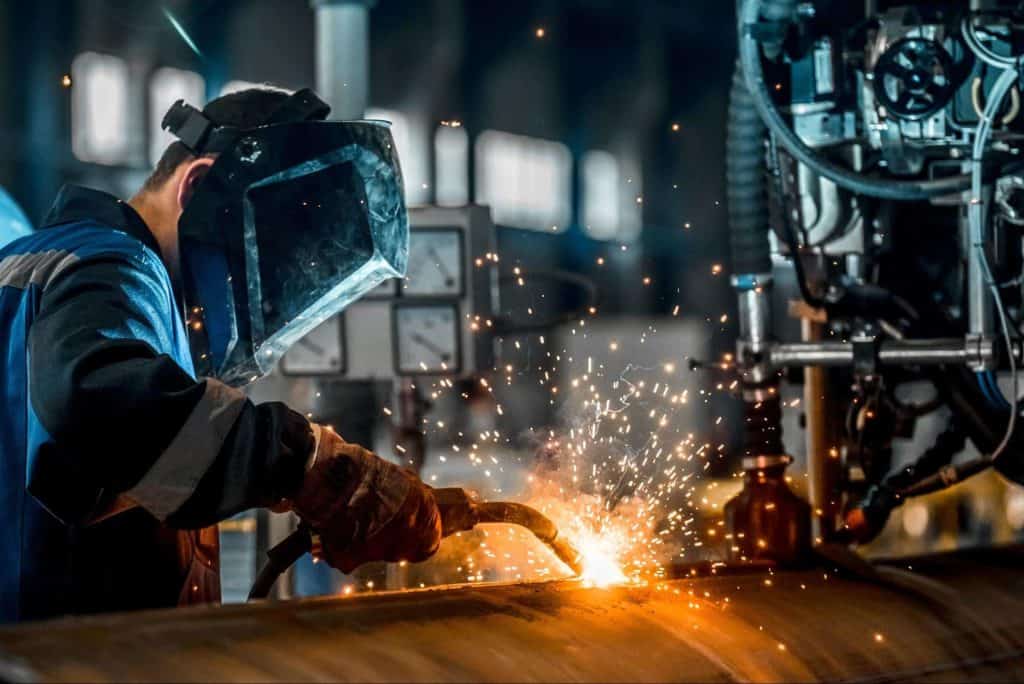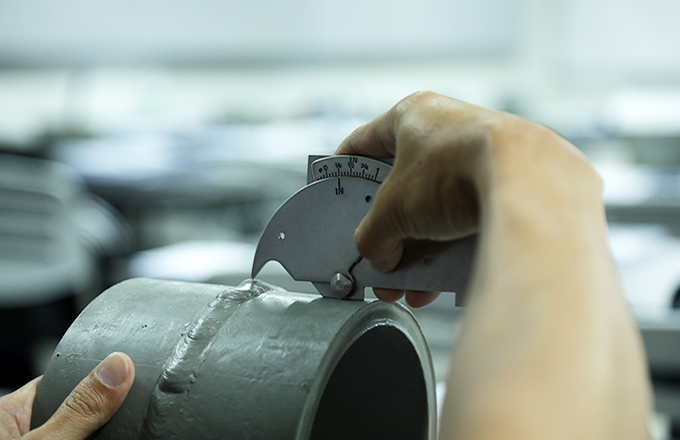Professional Welding Inspection Services in Gilbert Arizona: What You Need to Know
Professional Welding Inspection Services in Gilbert Arizona: What You Need to Know
Blog Article
Exploring the Significance of Welding Inspection in Industrial Applications: Guarding Against Failings and Enhancing Long Life
Welding inspection acts as an important line of defense in commercial applications, making certain the structural integrity and dependability of welded parts. By methodically determining issues such as porosity and insufficient blend, examinations not only stop failures however likewise prolong the life-span of essential assets. Following sector requirements enhances both safety and security and operational performance; however, the ramifications of ignoring these methods can be extreme. As we examine the complex advantages of routine evaluations, it ends up being noticeable that recognizing these dynamics is not just an issue of conformity but a critical critical for longevity and risk reduction (Welding Inspection Gilbert Arizona).
Duty of Welding Inspection
Welding inspection works as an important guard in commercial applications, making certain that welded frameworks meet specified standards of quality and safety. This procedure includes a methodical examination of welds to verify their stability, stamina, and conformity with recognized codes and requirements. The duty of welding evaluation is diverse, including both aesthetic assessments and non-destructive screening methods, which might include ultrasonic, radiographic, or magnetic particle testing.

Additionally, welding examination plays an important role in regulative compliance. Numerous industries are governed by rigorous security standards, necessitating complete documentation and validation of welding practices. By keeping these records, organizations can show adherence to safety and security laws, thereby promoting count on amongst stakeholders and customers. Ultimately, the duty of welding assessment is essential in advertising safety and security, enhancing efficiency, and safeguarding investments in commercial facilities.
Usual Welding Problems

Among one of the most common defects is porosity, characterized by tiny gas pockets caught within the weld metal. This occurs because of impurities or incorrect shielding gas, compromising the weld's stamina. One more substantial flaw is incomplete combination, where the weld metal stops working to bond appropriately with the base material, possibly causing structural weak points.
Fractures can additionally create during or after the welding procedure, frequently associated to thermal tensions or improper air conditioning prices. Furthermore, damaging, where the base metal is eroded along the weld bead, can deteriorate the joint and is frequently brought on by extreme warm input or incorrect method.
In addition, lack of infiltration occurs when the weld metal does not reach the root of the joint, leading to insufficient strength. Comprehending these common defects is vital for welders and inspectors alike to make sure that welded frameworks meet safety and efficiency standards, inevitably stopping potential failings in industrial applications.
Benefits of Normal Examinations
Normal assessments serve as a critical secure in making certain the dependability and longevity of welded frameworks. These evaluations identify prospective defects and weak points that might endanger the honesty of welds, enabling for prompt removal prior to concerns rise. By executing an organized evaluation routine, organizations can considerably lower the danger of disastrous failings that may lead to pricey downtime, equipment replacement, or perhaps crashes.
Furthermore, normal inspections add to enhanced quality assurance throughout the welding process. By sticking to a regular assessment routine, firms can guarantee that their welding techniques fulfill recognized top quality standards and ideal practices. This not only promotes a society of liability but likewise encourages continuous enhancement among welding employees.
Additionally, normal evaluations assist in far better maintenance preparation. By determining damage early, companies look here can strategically schedule substitutes and fixings, lessening disturbance to procedures. This positive technique eventually leads to extended property life-span and improved general efficiency.
Lastly, a commitment to regular inspections can improve a company's credibility in the industry. Stakeholders and customers progressively value organizations that focus on safety and security and top quality, therefore boosting trust and possibly resulting in raised company chances.
Sector Requirements and Regulations
Complying with market requirements and policies is a fundamental element of welding evaluation that complements the advantages of normal evaluations. These standards, developed by companies such as the American Welding Culture (AWS) and the American Culture of Mechanical Engineers (ASME), provide a framework for best methods in welding procedures, products, and examination methods. Conformity with these regulations makes certain that welds meet the needed quality and safety criteria, considerably minimizing the threat of structural failures.
Regulatory bodies like the Occupational Security and Health Management (OSHA) additionally impose guidelines that safeguard workers and the environment during welding procedures. By following these established standards, industries can enhance the reliability of their components and frameworks, ensuring they carry out as planned under various functional conditions.
In addition, adherence to industry criteria promotes uniformity in quality assurance, helping with smoother interaction amongst stakeholders and governing agencies. This alignment not only minimizes liability dangers but likewise boosts the integrity of organizations in open markets. Ultimately, compliance with welding standards and laws is not just a lawful obligation; it is a crucial financial investment in safety, efficiency, and lasting functional success.
Future Trends in Welding Inspection
As sectors remain to advance, the future of welding inspection is poised to integrate advanced modern technologies that boost accuracy and efficiency. Among one of the most significant patterns is the fostering of automation and robotics in assessment processes. Automated systems can conduct assessments swiftly, lowering human mistake and boosting throughput in producing environments.
Additionally, the combination of fabricated intelligence (AI) and artificial intelligence algorithms will allow anticipating analytics, enabling for real-time assessments and positive maintenance (Welding Inspection Gilbert Arizona). By evaluating information from previous inspections, these technologies can recognize patterns that could suggest prospective failures, thus extending the life expectancy of welded components

Additionally, the fad towards digitalization will certainly cause improved data administration systems that assist in much better monitoring, reporting, and conformity with industry requirements. In summary, the future of welding evaluation is defined by technical innovations that guarantee to dramatically improve reliability, safety, and functional effectiveness in numerous industrial applications.
Conclusion
Finally, welding assessment serves a crucial function in ensuring the honesty and durability of bonded structures across different commercial applications. By identifying flaws such as porosity and incomplete combination, routine evaluations play a significant duty in danger mitigation and quality control. Adherence to market requirements and guidelines additionally enhances operational safety and security and dependability. As developments in technology remain to evolve, the future of welding inspection assures enhanced precision and effectiveness, her response ultimately contributing to the durability of critical infrastructures.
Welding inspection serves as an important line of protection in commercial applications, ensuring the structural integrity and integrity of read here welded elements.Welding inspection serves as an essential secure in industrial applications, guaranteeing that welded frameworks meet defined criteria of high quality and security - Welding Inspection Gilbert Arizona. Ultimately, the role of welding examination is indispensable in promoting safety and security, enhancing performance, and protecting investments in industrial facilities
These standards, developed by organizations such as the American Welding Society (AWS) and the American Culture of Mechanical Engineers (ASME), supply a structure for finest methods in welding procedures, products, and inspection methods.In verdict, welding inspection serves an essential feature in making certain the honesty and longevity of welded structures across numerous industrial applications.
Report this page